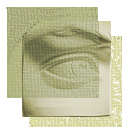


Yoko Ono has captured the imagination of Jews and Arabs alike by holding two exhibitions simultaneously one at the Israel Museum in Jerusalem, the other in the Arab town of Umm al-Fahm, in northern Israel. The name of her retrospective, which contains multimedia work from the 1960s until the present, is Have You Seen the Horizon Lately?
Ono, whose husband, John Lennon, was shot dead by a deranged fan in New York in 1980, says her aim is to focus on “hope and love” as a counter to “the dark side of life.” She is perhaps best known today for pulling stunts with Lennon, such as the “bed-in for peace.” (The two stayed in bed in an Amsterdam hotel for a week, receiving the press). But the Japanese-born artist was previously well-known in her own right, as an innovator in conceptual art and a pioneer of an avant-garde art movement of the 60s known as Fluxus.
Many of the exhibits at the Israel Museum are designed to engage the visitor through mental or physical interaction. In the installation “River Bed,” visitors are invited to move pebbles from place to place in accordance with their feelings.
The most popular exhibit has been an olive tree dubbed the “Wishing Tree” in which thousands of visitors have written personal wishes on small pieces of paper and then tied them to the trees branches, thereby creating a mass of white “leaves.”
Most people have left messages for personal fulfillment or for Israeli-Arab peace, though one person simply wrote “This poor olive tree.” Ono herself wrote a single word, “Imagine” the title of one of her husband’s most famous songs.
Also showing on one of the gallery walls is her 1967 film Bottoms, in which naked backsides can be seen close-up. Rumor has it that some of these buttocks belong to the Beatles.
But perhaps the biggest winner of all is the hitherto little known Arab town of Umm al-Fahm, where there is a similar “Wishing Tree.” She did not merely choose to exhibit in the town, but to “perform” her work Open Window by painting texts on the walls of the town’s art gallery to the accompaniment of music she recorded, some of it with Lennon, in the 60s and 70s.
For more information on Yoko Ono’s artistic career, see “Fluxus”.
Article copyright © Tom Gross. All rights reserved.